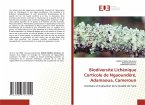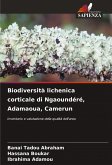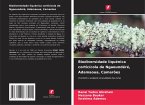Lichens are composite organisms resulting from the association of a fungus and a single-celled alga. Highly sensitive to atmospheric pollution, they are excellent bioindicators of air quality. This study combines an inventory of corticolous lichens with an assessment of air quality along three main roads in Ngaoundéré, Cameroon. Twenty-five species in 15 genera and 9 families were recorded. Physconia detersa, Permotrema austrosinense and Hypotrachya livida were the most abundant species, with Physcia apolia the least abundant. Parmeliaceae is the most diverse family, with 11 species and 5 genera. The foliaceous thallus is the most abundant and the fruticose thallus the least. The Wakwa station is the poorest in lichens and has the most polluted air, while the Tchabal station is the richest in lichens and has the least polluted air. The pollution of the sites is due to human activities, in particular road traffic, which is very dense in this crossroads town. These initial results will help to safeguard the environment and the health of the local population.
Bitte wählen Sie Ihr Anliegen aus.
Rechnungen
Retourenschein anfordern
Bestellstatus
Storno








